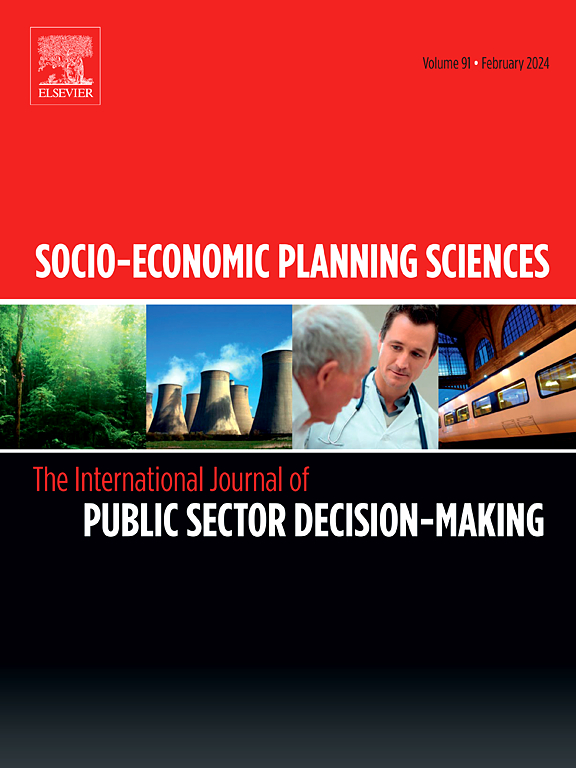分析和解决欧盟国家性别平等问题的 PLS-Hierarchical Path Modeling 方法
IF 6.2
2区 经济学
Q1 ECONOMICS
引用次数: 0
摘要
性别平等是一个多层面的复杂现象,是当今人们热议的话题,其工作室近年来也有了巨大的发展。在回顾了现有的性别平等指数并确定了用于制定这些指数的方法论之后,本文旨在说明建模方法如何能够克服现有指数的一些局限性。根据欧洲性别平等研究所制定的概念框架,我们提出了另一种衡量性别平等的方法。本文旨在强调偏最小平方--路径建模的潜在优势,并说明与欧洲性别平等指数相比,它更进一步,因为除了对国家进行排名外,我们的方法还可以:(1) 预测各维度之间的影响,并找到最有效地解释性别平等的维度;(2) 支持解决性别平等问题的决策。使用建议的模型有助于理解性别关系的复杂性,并促进各国之间的比较。在本文的最后,我们讨论了 PLS-PM 在研究和解决性别平等问题方面的其他可能扩展。本文章由计算机程序翻译,如有差异,请以英文原文为准。
A PLS-Hierarchical Path Modeling approach to analyze and address gender equality in the EU countries
Gender equality, a multidimensional and complex phenomenon, is a hotly debated subject today, and its studio has grown enormously in recent years. After reviewing existing gender equality indices and identifying the methodological approaches used to develop them, the paper aims to show how a modeling approach can overcome some of the limitations of existing indices. Based on a conceptual framework developed by the European Institute for Gender Equality, we propose an alternative methodological approach for measuring gender equality. The paper aims to highlight the potential advantages of Partial Least Square - Path modeling and to show that it goes a step further compared to the European Gender Equality Index in that in addition to ranking countries, our approach allows (1) predicting the impact between dimensions and finding those that most effectively explain gender equality; and (2) supporting decisions to address gender equality. The use of the proposed model can help to understand the complexity of gender relations and facilitate comparisons across countries. At the end of the paper, we discuss other possible extensions of PLS-PM to study and address gender equality.
求助全文
通过发布文献求助,成功后即可免费获取论文全文。
去求助
来源期刊

Socio-economic Planning Sciences
OPERATIONS RESEARCH & MANAGEMENT SCIENCE-
CiteScore
9.40
自引率
13.10%
发文量
294
审稿时长
58 days
期刊介绍:
Studies directed toward the more effective utilization of existing resources, e.g. mathematical programming models of health care delivery systems with relevance to more effective program design; systems analysis of fire outbreaks and its relevance to the location of fire stations; statistical analysis of the efficiency of a developing country economy or industry.
Studies relating to the interaction of various segments of society and technology, e.g. the effects of government health policies on the utilization and design of hospital facilities; the relationship between housing density and the demands on public transportation or other service facilities: patterns and implications of urban development and air or water pollution.
Studies devoted to the anticipations of and response to future needs for social, health and other human services, e.g. the relationship between industrial growth and the development of educational resources in affected areas; investigation of future demands for material and child health resources in a developing country; design of effective recycling in an urban setting.
 求助内容:
求助内容: 应助结果提醒方式:
应助结果提醒方式:


